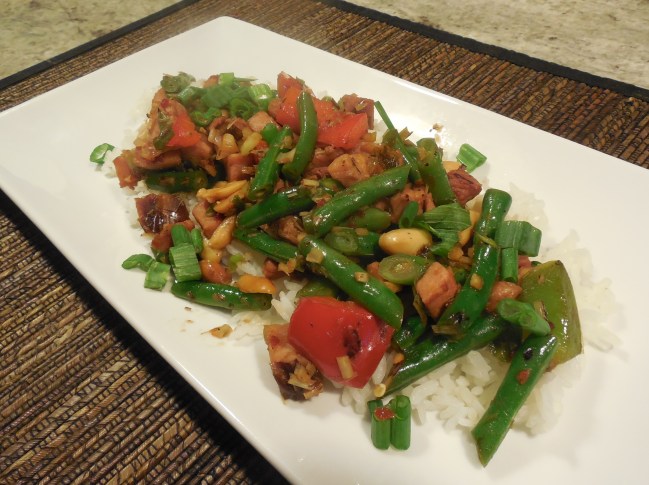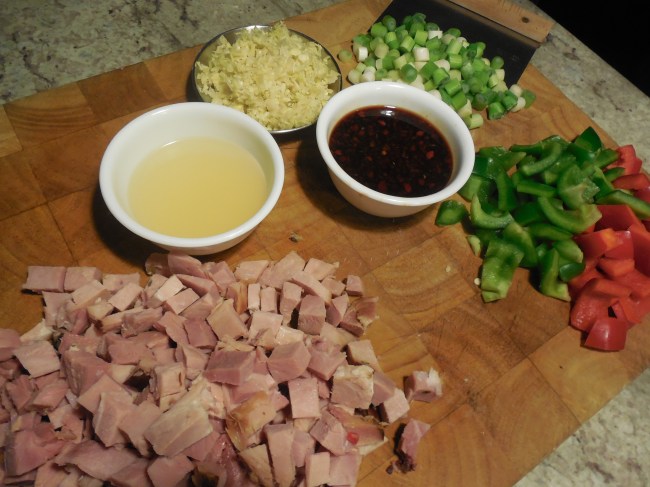
Remember my blog about the cider-braised ham? I briefly mentioned the “Lucky Leftover” recipes that accompanied that article. Our braised ham was several pounds smaller than the 8-10 pounder indicated in that recipe and we still had enough meat for two leftover dishes and a hambone for soup. So we made the Indonesian-style Ham Stir-fry just days after the main menu, then froze the rest of the meat and the bone for later use.
Spicy and sweet, this quick stir-fry dinner needed only short-grain sticky rice to complete it. And once again, we found a winner!
Ingredients:
- 3 Tbs. kecap manis
- 2 Tbs. plain rice vinegar
- 1-1/2 Tbs. sambal oelek
- 2 Tbs. peanut oil
- 6 medium scallions, white and light green parts only, thinly sliced (about 1 cup)
- 2 Tbs. minced fresh lemongrass
- 2 Tbs. minced fresh ginger
- 1-1/2 tsp. minced garlic
- 3/4 lb. green beans, trimmed and cut on the diagonal into 1-inch pieces (2-1/2 cups)
- 1 red bell pepper, cut into medium dice
- 3/4 cup unsalted roasted peanuts
- 1-1/2 lb. leftover ham, glaze removed and cut into medium dice (4 cups)
- 1/3 cup lower-salt chicken broth
TIP: If you don’t have or can’t find keycap manis (and we couldn’t), a syrupy Indonesian soy sauce, you can substitute 1-1/2 Tbs. soy sauce combined with 1-1/2 Tbs. unsulfured molasses.
Directions:
- Whisk the keycap manis (or your substitute), vinegar, and sambal oelek in a small bowl; set aside.
- Heat a 14-inch wok or heavy-duty 12-inch skillet over medium-high heat until hot, then swirl in the oil. Add the scallions, lemongrass, ginger, and garlic and stir-fry until softened, about 30 seconds.
- Add the green beans, bell pepper, and peanuts and stir-fry for 2 minutes.
- Add the ham and stir-fry until warmed through, about 2 minutes.
- Pour in the broth, scrape up any browned bits, and bring to a boil.
- Pour in the kecap manis mixture and stir-fry until bubbling and the ingredients are thoroughly coated in the sauce, about 2 minutes.
- Serve over hot rice.
















